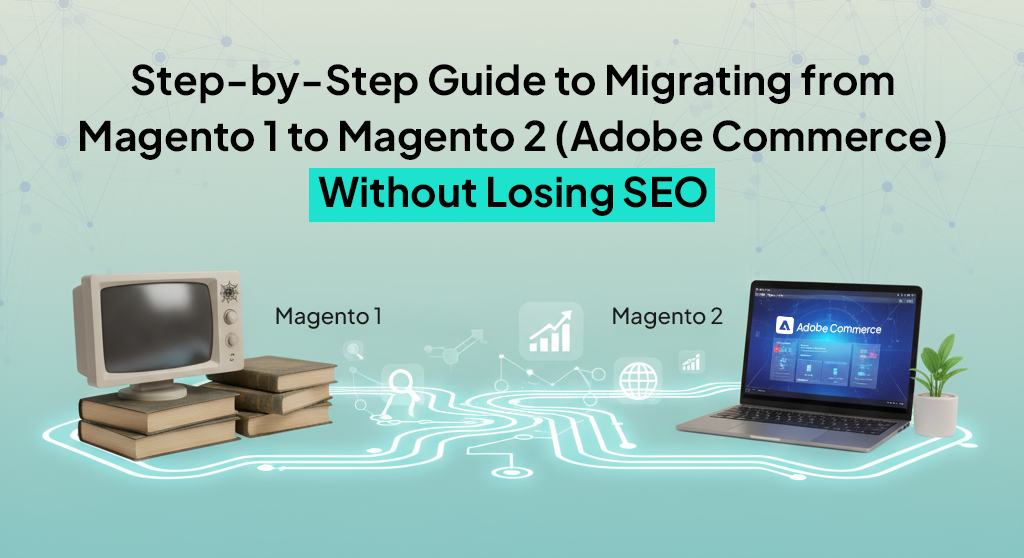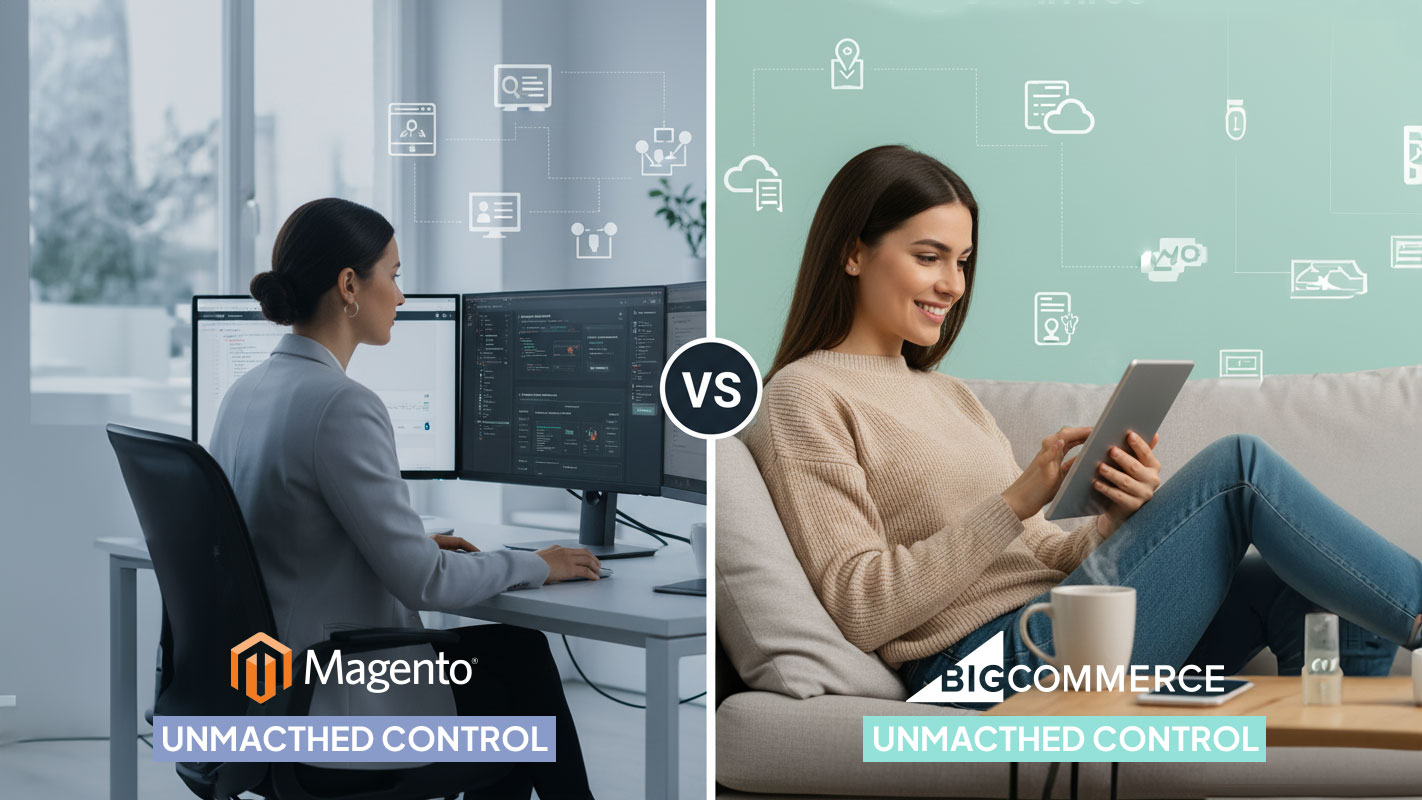Retail is changing fast in Germany. Not slowly. Not over time. Right now. The way customers shop — online, offline, on their phones, in stores, through marketplaces — it’s all blending into one experience. That’s what omnichannel really means today. And if you’re a retailer trying to stay relevant, you already know this is not optional anymore. You have to show up everywhere, and you have to do it well.
A lot of retailers are choosing Shopware to make that possible. But the truth is, using Shopware “as is” doesn’t cut it. Customization is what makes the difference between a half-baked online store and a real omnichannel engine. And that’s exactly what German retailers are starting to realize, and act on.
Why Shopware Fits the German Retail Mindset
Shopware was built in Germany. That alone doesn’t make it better, but it does mean it understands the market better than most other platforms. The flexibility is there, the ecosystem is strong, and it doesn’t box you into some pre-built way of doing things. Retailers here like to stay in control, and Shopware gives them that option.
The big shift we’re seeing is that businesses are not only using Shopware as their web store. They’re turning it into the core of their entire sales infrastructure. That means their online shop, retail POS, mobile experience, ERP, CRM, and even marketplace integrations are starting to revolve around it. But that shift only works when the platform is tailored, not just installed.
From Standalone Storefront to Central Control Hub
Ten years ago, Shopware was often a tool for smaller online stores. Install it, upload some products, get a theme going, and you’re done. Today, that approach is outdated. Retailers are now using Shopware as the hub that powers everything, and this is where customization becomes non-negotiable.
When you want your Shopware store to talk to your warehouse system, update your POS inventory in real time, sync pricing rules across marketplaces, and manage customer data across all platforms, you need integrations. You need logic that reflects your business. That can’t be achieved with a plug-and-play setup.
This is where developers, especially those who understand Shopware inside out, step in to shape the platform to match a retailer’s real operations.
Real-Time Inventory Isn’t a Luxury Anymore
Omnichannel falls apart the moment a customer sees a product online, drives to the store, and it’s not there. Or worse, places an order only to get a refund because it was out of stock. Inventory syncing used to be a nice-to-have. Now, it’s the baseline.
Retailers are using Shopware to sync stock levels across online and offline channels. The base system allows for inventory tracking, but the real challenge is aligning it with in-store POS systems, warehouse stock, and sometimes even consignment inventory. That requires API connections, custom jobs to handle sync timing, and smart error handling to deal with conflicts or delays.
It’s not glamorous work, but it’s critical. When it’s done right, no one notices. When it’s missing, everyone notices.
Personalization is No Longer About Just Using a First Name
In the omnichannel world, personalization has to go beyond emails that say “Hi [FirstName].” Customers expect relevant offers, local product suggestions, and even different buying options depending on where they are or how they shop.
Shopware’s built-in Rule Builder is a good starting point. It lets you control what happens under specific conditions—show a discount to returning customers, promote certain categories in certain regions, that kind of thing. But most retailers outgrow these default settings fast. They need logic tied to external data, to loyalty programs, to location data, or even to real-time inventory signals.
That means custom rule sets, custom plugins, and sometimes external services plugged into the Shopware ecosystem to create the experience people expect. For instance, showing different shipping options depending on local warehouse stock or offering bundles only in zip codes where the demand is high — these things matter, and they can’t be built with a few clicks.
Shopware and Headless Commerce: A Practical Match
The term “headless commerce” sounds like a buzzword, but the concept is pretty practical. It means separating the backend (where product info, orders, pricing, etc. live) from the frontend (what customers see and interact with). This setup gives retailers full control over how they present their brand.
Shopware is built with this model in mind. The API-first architecture makes it easy to plug in a custom frontend—whether it’s built in Vue, React, or anything else. German retailers are using this flexibility to build storefronts that load faster, work better on mobile, and reflect their brand more accurately than any theme ever could.
For businesses that sell through more than one frontend — maybe a D2C site, a B2B portal, and a mobile app — all talking to the same Shopware backend, this separation is not just useful. It’s essential.
Marketplace Integration That Actually Works
Selling on your own website is great, but German retailers also know that marketplaces like Amazon, eBay, Zalando, and OTTO are where a lot of their customers are shopping. Integrating those sales channels into Shopware is a must if you want to keep things running smoothly behind the scenes.
Shopware offers extensions for marketplace integration, but they often need tweaking. The data structures on these platforms don’t always match neatly. Prices may need to vary. Descriptions often have to be rewritten. Delivery time expectations are different. Without customization, these things create chaos — wrong data gets sent, orders fall through the cracks, and the team ends up doing manual corrections.
Retailers who want to scale omnichannel properly usually end up with custom middleware or tailored modules to manage the complexity. It’s not about adding more channels but managing all channels from one place without losing control.
In-Store and Online Campaigns Need to Work Together
Let’s say you’re running a weekend promotion in your physical store. Shouldn’t that same deal show up online? Shouldn’t customers get the same message in their email, their social feed, and your mobile app?
Too often, the promotions run in silos. The in-store team has their own systems and offers. The online team sets up something else. Customers get confused — or worse, annoyed.
With Shopware customization, it’s possible to centralize these campaigns. That way, if you’re discounting winter coats by 20%, it shows up everywhere—on the site, in your POS, in the app, and even in the banner ads you’re running. And if you’re limiting it to specific locations or customer groups, the platform can enforce those rules consistently.
Retailers are moving away from “online offers” and “store-only offers.” They’re simply running promotions, across all touchpoints, and using Shopware to keep the message consistent.
Loyalty Has to Follow the Customer—Everywhere
Customer retention is just as important as acquisition. But if someone buys in your physical store and then visits your website, they expect their profile, rewards, and purchase history to follow them. That means your loyalty system needs to be centralized, and deeply integrated.
Shopware allows for loyalty points, vouchers, and customer groups, but when it comes to tying it all together across in-store and online, customization is required. The backend systems need to talk to each other, and the logic has to account for various edge cases — returns, partial redemptions, split purchases, and more.
What customers want is simple, a consistent experience. What it takes to deliver that? Less simple, but entirely possible with the right customization.
Speed and Mobile Optimization Are Not Optional
Customers aren’t patient. If your mobile site is slow or clunky, they’ll leave, simple as that. Google’s Core Web Vitals have made performance more than just a nice-to-have. Now it impacts your SEO, your ads, and your revenue.
Shopware gives a solid base, but if you want a lightning-fast site, it usually means decoupling the frontend or going with a Progressive Web App (PWA). This lets you offer features like offline browsing, add-to-home-screen, push notifications, and fast load times, even on weaker connections.
Retailers using PWAs built on top of Shopware’s APIs are seeing better bounce rates and higher mobile conversions. And it’s not just the tech-savvy Gen Z crowd, this kind of performance matters across age groups and industries.
Analytics That Tell You What’s Really Going On
Omnichannel success doesn’t come from guessing. You need to know what’s working, and where. The challenge is that data lives in too many places: Google Analytics, in-store sales, CRM systems, support tickets, ad platforms.
That’s why retailers are integrating analytics into Shopware in more customized ways. Whether it’s setting up dashboards that combine online and offline KPIs or tracking customer journeys across channels, this isn’t something that happens by default. It’s built. Piece by piece.
When the data is clear, you can make better decisions, where to invest, which channels need attention, which products are overperforming or underdelivering. Without it, you’re just hoping.
What Customization Actually Looks Like
It’s easy to talk about “customizing Shopware,” but what does that actually involve? In most cases, it’s a mix of:
- Developing custom plugins to extend functionality
- Building API connections to third-party systems like ERP, CRM, or POS
- Creating custom rules and business logic inside Shopware
- Tailoring the frontend for speed, UX, and branding
- Building dashboards, workflows, or automation to reduce manual work
The goal isn’t to make Shopware more complex. It’s to make it more aligned with your business. Done well, it becomes simpler for the team to manage—not harder.
Final Thoughts: There’s No One-Size-Fits-All
German retail is diverse. What works for a fashion label in Cologne might not work for a specialty food store in Dresden. But the common thread is this: customers want consistency, convenience, and control. If your business can offer that — across every channel — you’re already ahead of the curve.
Shopware is a powerful tool. But it’s just that, a tool. The value comes from how you use it, how you shape it, and how you connect it to the rest of your operation. If you want to compete in an omnichannel world, customization is not optional anymore.
At BrandCrock, we help businesses turn Shopware into the kind of system that can actually support their goals, not just today, but long-term. If that’s what you’re looking for, we’re ready to help. Get in touch with us and let’s make it happen.








